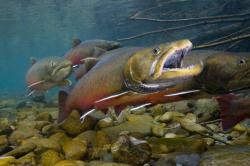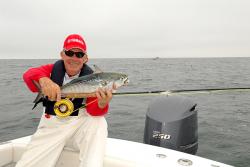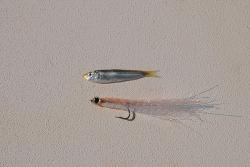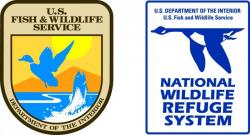You can catch fish in Georgia each month of the year – Angling Calendar
If Larry the Cable Guy asked “What is great about Georgia fishing” it would be a trick question. The only sensible answer is “Everything!”
We can fish from small streams to wide open oceans. Rivers and lakes as well as saltwater bays and inlets are open to the public and full of a huge variety of game fish. And our water never gets hard on top, so we can fish year round without chopping holes to get to the water.
Try these places and species this year for some fun and great eating, too.
January
Species: Largemouth Bass
What To Expect
Jackson Lake is a very old Georgia Power reservoir in the middle of the state. It has many rocky shorelines and points, shallow flats and docks around the lake.
How To
Shad are the most common baitfish and there are lots of crawfish in the lake, too. Jackson is known for its trophy largemouth and you have a good chance of a five pound plus fish in January. Fish a shad colored crankbait like the Series 5 Sexy Shad from Strike King around docks, rocks and seawalls with sand. Also try a big jig and pig in the same locations.
I landed an eight pound, thirteen ounce largemouth in a club tournament three years ago in January on this pattern. You won’t catch a lot of largemouth but every cast could produce a trophy.
Contact : Berrys Sporting Goods in Griffin – 770-227-3048
Trout on the coast are in deep holes in the bays and rivers. Work a small curly tail jig very slowly in these holes or use live shrimp fished on the bottom, crawling it along close to the bottom. For big spotted bass try a float and fly on bluff walls at Carters Lake, or jig a spoon under schools of baitfish.
February
Species: Crappie
What To Expect
Lake Walter F. George is a big, shallow Corps of Engineers lake south of Columbus on the Chattahoochee River. Many of its creeks and sloughs are full of standing timber and crappie hold in the tops of it.
How To
Drift or troll small jigs and minnows from near the mouths of creeks and sloughs toward the backs until you find the schools of crappie. Keep trolling the area or stop and work a concentration of fish carefully.
You can also tie up to stumps sticking above the water near channels in the creeks and drop your baits down to wait on passing schools of crappie. Try different depths until you find the depth the fish are holding. You will catch lots of crappie and most are a good size.
Contact Capt. Sam Williams’ guide service (334) 687-6266 or (334) 355-5057.
Walleye are not common in Georgia but you can catch some with a chance at a big fish on Lake Blue Ridge. Fish rocky points at night with earthworms or small jigs. Try the Savannah River below the Thurmond dam for large numbers of good size yellow perch. Drift in deeper water and fish small live minnows or jigs tipped with minnows.
March
Species: Stripers
What To Expect
Lake Hartwell is a big Corps of Engineers lake on the upper end of the Savannah River. There are many good boat ramps and campgrounds on the lake, making it easily accessible. The lower lake usually stays clear in the spring and schools of stripers roam it.
How To
Stripers congregate and feed on wind blown banks in March. Cast bucktail jigs or Zoom Flukes to any stained water and mud lines caused by the wind in the lower lake, especially in major creeks on secondary points. If there is no wind, fish live blueback herring in deeper water along creek channels in the same areas.
Check out Lightwood Log Creek, Eastanollee Creek and Little Beaverdam Creek on the Tugaloo River arm of the lake for concentrations of stripers.
Contact: Ricks Guide Service 864-356-7271.
Go to West Point Lake and fish jig head worms on gravel points near creek mouths for large numbers of spotted bass. Try the lower parts of Rock Creek in Fannin County with flies for stocked rainbows.
April
Species: Largemouths
What To Expect
Thurmond is the biggest lake in Georgia and it produces huge numbers of bass. Located on the Savannah River near Augusta, some of the lake is in South Carolina but a Georgia fishing license is good anywhere on the lake.
Last year in the Georgia Bass Chapter Federation Top Six tournament in April, 250 fishermen weighed in 2239 bass over 12 inches long weighing 4172 pounds in two days. There were many reports of 30 plus keepers per fisherman per day.
How To
The lake has been down several feet for several years. Bass stack up on clay and rock secondary points in coves and can be caught on Carolina rigs, jig head worms and crankbaits. Try watermelon worms if the water is clear and green pumpkin if stained. Contact Dave Willard, Crockett Rocket Guide Service – (803) 637-6379 Boat: (706) 214-0236
Troll crappie jigs at Lake Oconee up the Apalachee River or the back of Lick Creek. Follow the creek and river channel. Put a small boat in the Etowah River upstream of Rome, motor up above its junction with the Oostanaula River and fish small spinners and jigs for the white bass spawning run. Cast to trees, rocks and the mouths of creeks.
May
Species: Smallmouth Bass
What To Expect
Lake Blue Ridge is a Tennessee Valley Authority lake on the Toccoa River in Fannin County. This small lake has rocky shorelines and deep bluff banks. It is the one lake in Georgia where you have a good chance to catch a smallmouth bass.
How To
Fish Zoom Flukes and topwater poppers on rocky points and pockets early and late in the day. In the morning watch for any shad spawning on the shoreline and fish it hard with the Fluke or spinnerbait.
After the sun gets on the water back off the points in deep water and fish a jig head worm or drop shot rig. Watch for schools of shad with bigger fish under them on your depthfinder and fish them.
Contact: Bob Borgwat, Reel Angling Adventures – 866-899-5259
Sight fish for triple tail off the coast of Jekyll Island this month. Look for fish floating on the surface or holding under anything that will cast a shadow, like a floating palmetto frond. Cast a live shrimp in front of the fish. Bluegill will bed on West Point on the full moon this month. Find the beds in protected sandy pockets and fish them with crickets
June
Species: Shellcracker
What To Expect
Lake Seminole is a sprawling grass filled Corps of Engineers lake in the corner of Georgia, Florida and Alabama. It is very shallow with miles of sand and mud flats less than five feet deep. Stumps and standing trees cover the lake, too.
How To
Shellcracker spawn late April through May and they grow big on Seminole, with fish weighing a full pound common. Beds are easy to spot in the shallow water. Look for saucer shaped marks on the bottom one to four feet deep in protected areas.
Cast a red wiggler near the beds on light tackle or use a cane pole to dabble them over the beds. Use a cork to suspend the worm off the bottom and a small split shot above a #6 hook will work well. Contact: Wingates Lunker Lodge – 229-246-0658
Take a wade/float trip on the upper Flint River for shoal bass. Put in at the Highway 36 Bridge and arrange for a pickup at the next ramp. Fish small worms, topwater plugs and small spinnerbaits in the shoals. For giant flatheads, fish deep holes with heavy tackle and live bream in the Altamaha River near Jesup.
July
Species: Tarpon
What To Expect
The bays and inlets on the coast around Brunswick are cut by river channels, sloughs and creeks. Oyster beds attract baitfish and many species move into them to spawn.
How To
Tarpon move into the bays and rivers in the summer and offer the chance to hook into some big fish. They feed on mullet and menhaden, locally called pogies. You can see the tarpon rolling on the surface as they feed, making this exciting fishing.
Use a cast net to catch pogies and small mullet and fish several live baits when you see feeding fish. Freeline a couple of baits and suspend a couple more under big corks. An incoming or outgoing tide is best.
Contact: Captain Mark Noble – 912-638-7673
Lake Andrews between Walter F. George and Seminole produced the state record 80 pound, 4 ounce blue cat. Fish live bream and cut bait on heavy tackle in riffs and current breaks below the George dam. Blueback herring in Hartwell draw topwater schooling action on sunny summer days. Cast a big topwater plug over shoals and points on the lower lake and watch for surface activity.
August
Species: Blue Catfish
What To Expect
Lake Oconee is a Georgia Power lake near Madison. It has current moving both ways most summer days due to power generation at the dam and a pumpback system. The catfish population has exploded in the past few years and there are many big blue cats in the lake.
How To
Anchor in 15 feet of water off river channels, humps and points on the main lake. Current moving across these areas makes the bite much better. Cast out a variety of live bream and cut or whole shad on a slip sinker rig. Use a heavy enough sinker to keep your bait near the bottom.
Put out several heavy rods and reels with 20 pound line, casting down current of your anchored boat. Put them in rod holders and watch for a catfish to pull the rod tip down as it swims off with the bait. Circle hooks will hook the fish better.
Contact: Chad Smith Guide Service 706–207-2411
The Chatthoochee River upstream of Poor Boy Ramp on Lake Harding is lined with grass beds. Fish a buzzbait or jig head worm around the edges of them for large numbers of bass. Bait a point at the mouth of a cove on Lake Thurmond with sinking catfish food and fish on the bottom with earthworms or kernel corn on a short shank hook for fast action from some big fish.
September
Species: Spotted Bass
What To Expect
Lake Russell is a Corps of Engineers lake on the Savannah River between Hartwell and Thurmond. It is undeveloped with a natural shoreline but crossed by many bridges. Spotted bass are plentiful and hit well in September.
How To
Riprap holds large numbers of spotted bass in September. Start early in the mornings with topwater baits like a Pop-R around the rocks and pilings. Also run a big crankbait parallel to the rocks and beside pilings.
When the sun is on the water fish a light jig head worm in the same areas. Also find brush piles and rocks around the pole channel markers and fish them with topwater baits and jig head worms. Spots will come to the top to hit topwater all day long on some days.
Contact: 72 Marine – 866-575-8847
For grouper, fish live cigar minnows or Spanish Sardines on the bottom on ledges surrounded by sand on the Savannah Live Banks. At Allatoona, follow the shad as they migrate into creeks with the bass following them. Throw a square bill crankbait or spinnerbait on points going into the creeks.
October
Species: Rainbow Trout
What To Expect
The Toccoa River below Lake Blue Ridge dam is very scenic and offers several good access points. It is stocked with Rainbow and Brown trout and high catch rates are normal, with a good chance for a trophy trout.
How To
You can use live bait, artificial lures and flies on the river. Live nightcrawlers are good choices for live bait but minnows are illegal. Rooster tails and small spoons are good minnow imitations for bigger trout. Fly fishermen should match the hatch when trout are rising, otherwise use nymphs and streamers.
Fish your choice of baits anywhere there is a current break. Boulders, riffs, logs and trees in the water all provide feeding stations for trout. Also drift bait through deeper pools for trout holding there.
Contact: Kent Klewin – 770-330-7583
Fish live minnows straight under the boat beside standing trees along the river channel on the upper end of Lake Blackshear for large numbers of good size crappie. Fish buzzbaits around grassbeds on Lake Sinclair early and late. During the day run a crankbait or jig head worm around seawalls and rocky points.
November
Species: Redfish
What To Expect
The Georgia coast is lined with barrier islands and shallow sand bars are everywhere. Bull red drum, usually called redfish, come in to feed on those sandbars in the fall. They are big, with some up to seventy and eighty pounds.
How To
Anchor on shallow sand bars so the current takes your bait out across the bar. Let your bait drift into deeper holes just off the sandbars. Cut and live menhaden and mullet work well.
This is sport fishing since you can not keep the big redfish. Use heavy tackle and a big 7/0 to 9/0 circle hook to help release fish alive to spawn again. They are exciting to catch and will offer you all the fight you can handle.
Contact: Captain Bob Barnett – 912-727-5335
Cast in-line spinners around the Lake Burton dam, the Murray’s Cove boat ramp and Moccasin Creek boat ramp to catch recently stocked ten inch brown trout and some bigger ones that come to feed. For fliers, fish a Yellow Sallie fly in backwaters and sloughs on the upper reaches of the Suwannee River near the Okefenokee Swamp.
December
Species: Rainbow Trout
What To Expect
The Chattahoochee River from the Lake Lanier Dam to Peachtree Creek is cold enough to support trout. Trout are stocked in the river and fishing can be excellent, especially in the delayed harvest area from Sope Creek to U.S. Highway 41, with catches of 30 trout a day reported.
How To
Access the river at Cochran Shoals, Whitewater Creek and Paces Mill and fish single-hook artificial lures and flies only. This is during the delayed harvest time and lures are restricted, and all trout must be released. About 50,000 trout are released into the river between November 1 and April each year, so there are large numbers of fish here.
Fly fishermen use black or olive wooly buggers and #18 – #20 Parachute Adams. For recently stocked fish high visibility flies like the Y2K purple warrior are good. For spinning tackle, use a small yellow Rooster Tail or the smallest yellow Rapalas on two to four pound test line.
Contact: Chris Scalley – 770-650-8630
Fish Lake Lanier brush piles in 30 feet of water with four inch fruit colored worms on a drop shot rig. Fish near the pump outlet and the dam on Lake Juliette with cut or live shad in deep water for some trophy size stripers.
If you want to go fishing this year, you will find something hitting near you every month of the year.









